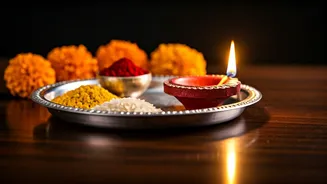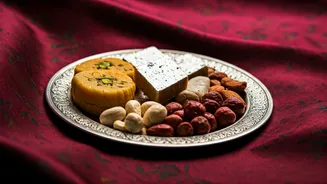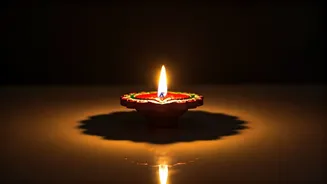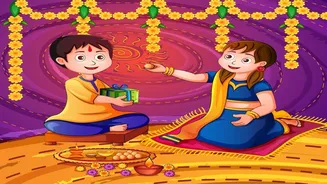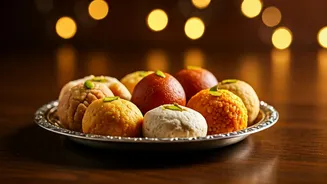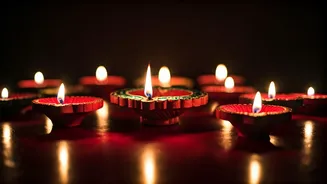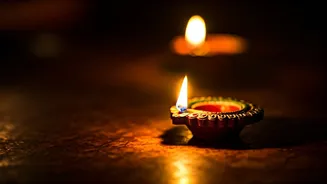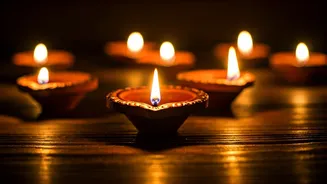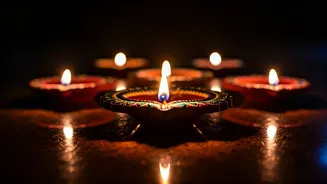Understanding Bhai Dooj
Bhai Dooj, also known as Yama Dwitiya, is a significant Hindu festival celebrated to honor the loving bond between brothers and sisters. Falling on the second
day after Diwali, this festival is a time for sisters to pray for their brothers' long life and prosperity, while brothers, in turn, offer gifts and blessings. The festival's name reflects its connection with Yama, the god of death, who visited his sister Yamuna on this day. The essence of Bhai Dooj lies in the exchange of blessings, the performance of specific rituals, and the strengthening of familial ties. The day is filled with joyous celebrations, special meals, and the exchange of gifts, symbolizing the enduring love and support between siblings. The rituals are a beautiful representation of the protective role that siblings play in each other's lives, reinforcing the importance of family in the Indian culture.
The Tilak Ritual
The Tilak ceremony is a central aspect of Bhai Dooj, where sisters apply a tilak (vermilion mark) on their brothers' foreheads. This ritual is believed to protect the brothers from harm and bring them success. The process typically begins with the sister performing aarti, a ritual of waving a lit lamp in front of the brother while chanting prayers. Following the aarti, the sister applies the tilak, often accompanied by rice grains, on the brother’s forehead. This is followed by offering sweets, symbolizing a wish for a sweet and prosperous life for the brother. The brother, in return, offers gifts or blessings to the sister as a token of his love and appreciation. The timing of the Tilak Muhurat, the auspicious time for this ritual, is carefully observed and holds significant importance in ensuring the ceremony's effectiveness. The entire ritual is a deeply symbolic act that reinforces the bond between siblings, embedding faith and commitment within the relationship.
Puja Vidhi Explained
The puja vidhi, or the detailed steps of the puja, plays an important part in Bhai Dooj celebrations. Preparations begin with a clean and decorated space, often involving the placement of a chowki (a small wooden platform) and the setup of the necessary puja items. The sister performs the aarti of her brother, circling a lit lamp in front of him, while chanting prayers and invoking blessings. After the aarti, the sister applies the tilak on the brother's forehead, using a mixture of vermilion, rice grains, and sometimes a bit of curd. Prayers are offered to Yama, the god of death, seeking his blessings for the brother's longevity and well-being. The brother, in return, gives gifts to his sister, expressing his love and gratitude. The traditional sweets, such as ladoos and barfi, are offered and exchanged, creating a joyous and festive atmosphere. Each step of the puja vidhi holds deep meaning, reaffirming the strong bond between siblings and expressing gratitude for the blessings of a loving relationship.
Yama Dwitiya Significance
The spiritual significance of Bhai Dooj is deeply rooted in the story of Yama and Yamuna. According to legend, Yama, the god of death, visited his sister Yamuna on this day. Yamuna welcomed him warmly and performed a puja, praying for his well-being. Touched by her affection, Yama declared that anyone who receives a tilak from their sister on this day would be blessed with a long life. Therefore, Bhai Dooj celebrates the victory of life over death, and the power of sisterly love and prayers. The festival is a reminder of the strong familial connections and the importance of cherishing those relationships. It embodies the protective and supportive role that siblings play, offering a sense of security and belonging. This narrative highlights the triumph of affection and the blessings that come with it, reinforcing the sanctity of family ties in Hindu culture.
Celebrating Bhai Dooj
Celebrations of Bhai Dooj typically involve a blend of traditional rituals, festive food, and the exchange of gifts, symbolizing the enduring love between brothers and sisters. Homes are often adorned with lights and decorations, reflecting the joyous occasion and fostering a festive atmosphere. The day starts with sisters preparing a special meal for their brothers, followed by the Tilak ceremony. Traditional sweets and dishes are an integral part of the celebrations, adding to the joyous ambiance. Brothers often give gifts to their sisters, expressing appreciation and strengthening their bond. The festivities are a wonderful demonstration of the love and care between siblings, fostering a sense of warmth and belonging. Bhai Dooj is a joyous occasion that unites families, fortifying the emotional ties between brothers and sisters through acts of love, respect, and mutual blessings. It's a time to cherish the unique bond and create lasting memories.
